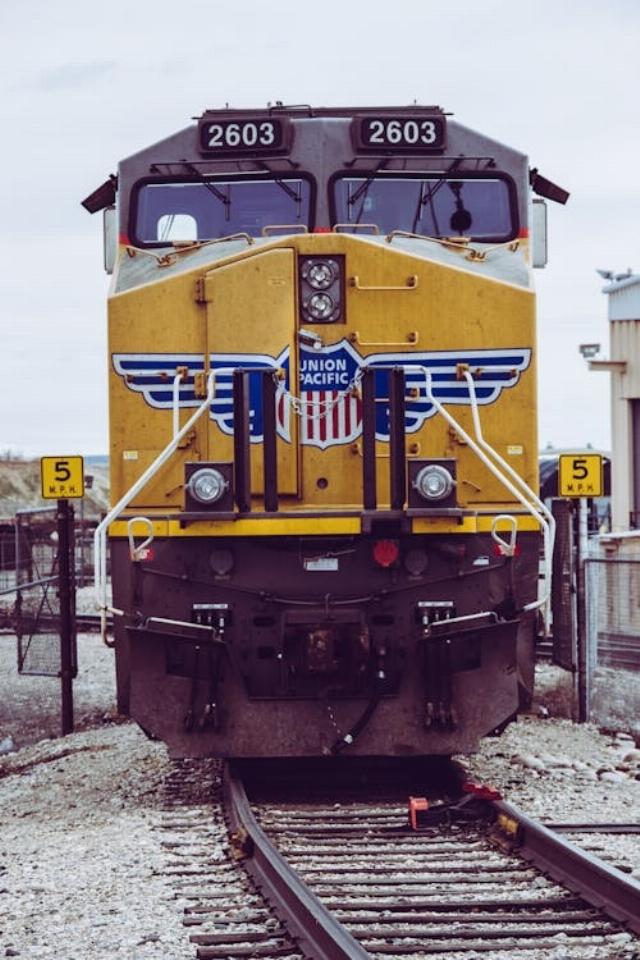


In 1869, the Union Pacific Railroad and Central Pacific Railroad met at Promontory Point, Utah, where the “golden spike” was laid that connected the eastern and western lines to form the first transcontinental railroad.
More than 150 years later, Union Pacific is still chugging along, albeit quite a bit faster these days.
On July 29, Union Pacific and Norfolk Southern “announced an agreement to create America’s first transcontinental railroad.”
“These legendary companies will seamlessly connect over 50,000 route miles across 43 states from the East Coast to the West Coast, linking approximately 100 ports and nearly every corner of North America. This combination will transform the U.S. supply chain, unleash the industrial strength of American manufacturing, and create new sources of economic growth and workforce opportunity that preserves union jobs,” according to the Union Pacific press release.
Although I am generally not in favor of these types of mergers, which can create monopoly-like conditions in the market, it seems like a fait accompli at this point.
Hypothetically, the merger could result in several benefits to the railroad industry. It could reduce redundancy and increase efficiency. Union Pacific would have enormous economy of scale at its disposal. In a perfect world, this would lead to reduced freight costs, lower fares for passengers, and a host of potential innovations that could revolutionize the railroad sector.
Because the railroad industry has been around for nearly 200 years, the federal government has had ample time to issue counterproductive regulations. Many of these regulations date back decades and are hopelessly behind new advances in technology.
The Trump administration is considering some regulatory reforms. But they merely scratch the surface.
Last month, for instance, the U.S. Department of Transportation proposed “to repeal several roadway workplace safety requirements that have become obsolete.” However, this limited repeal would only affect miniscule things like “clarifying” the “required training for operators of roadway maintenance machines equipped with a crane includes specific aspects such as maintaining vertical clearance.”
Along with being saddled with more than 150 years of grotesque government regulations, the railroad industry is also beholden to big labor.
It wasn’t coincidental that Union Pacific clearly indicated it intends to “preserve union jobs” after the merger.
While it is true that union labor and railroad companies have not been allies forever, it certainly seems that they are playing nicer these days. Although occasional disagreements still exist, by and large, big railroad has been willing to placate to the demands of big labor in order to stay in good graces with big government, I presume.
Generally, the railroads would not exist, in their current state, without big government.
When the federal government decided to support the building of the transcontinental railroad, it came up with the genius idea of paying the railroad companies by the mile in order to speed up the project. This resulted in railroad companies sheerly focusing on laying as much track as possible, not in the most efficient straight-line method.
This is but one of scores of examples of government intervention in the railroad sector that have gone awry.
Providentially, President Trump is the antithesis of Biden and many more past presidents when it comes to needless bureaucracy, overregulation, and foolish federal subsides.
If the Union Pacific acquisition of Norfolk Southern occurs, it would be a great opportunity for the Trump administration to undertake a complete assessment of the thousands of federal rules that currently apply to an industry that needs and craves modernization.
With AI on the horizon, we may no longer need the giant, bloated union labor force that exists mostly to serve its own ends, namely higher compensation, better retirement benefits, and more job protections.
While I understand that some of these workers may fear that their jobs are in jeopardy, that is called creative destruction. I bet the horse-and-buggy drivers were pretty agitated when Americans began purchasing Model-Ts, and their services were no longer needed. However, society is a dynamic place that constantly changes. Therefore, it is time to reassess the outmoded, draconian regulatory environment that has hampered railroad innovation for far too long.
Chris Talgo (ctalgo@heartland.org) is editorial director at The Heartland Institute.

Image: Pexels/Brett Sayles
